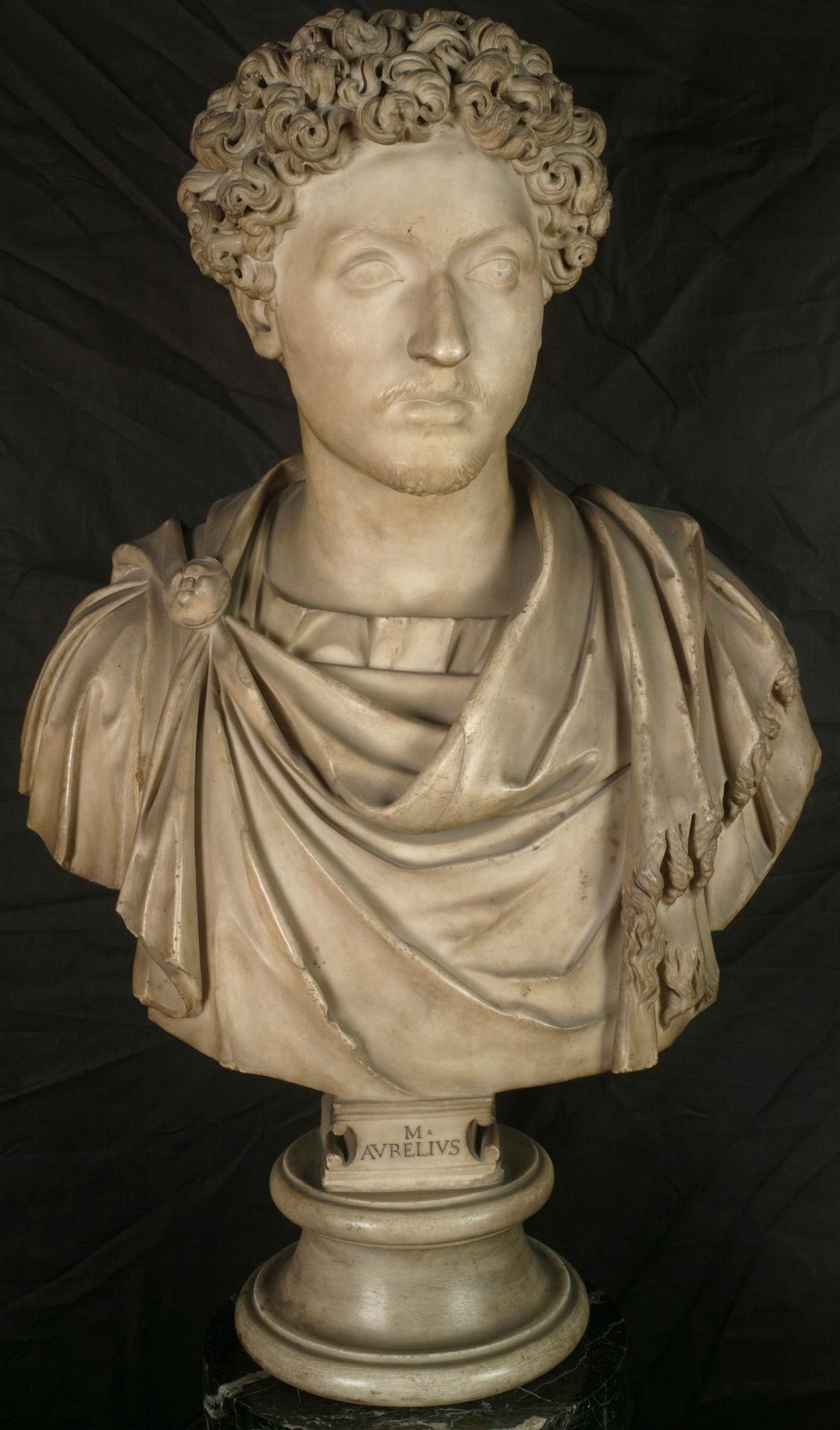Portrait of Marcus Aurelius
Roman art
The bust represents the young Marcus Aurelius in the years preceding his accession to the imperial throne (161-180 AD). The wide, broad forehead, the globular, slightly protruding eyes and the pronounced iris seem to be a prelude to the iconographic model of the "philosopher emperor", which would characterise the official image of his reign. In the case of Marcus Aurelius, self-representation as an intellectual versed in the speculative disciplines should not be considered merely the adaptation to a cliché. The emperor, in fact, was the last original exponent of Stoicism, an ethical doctrine that imposed an extremely rigorous code of conduct based on the principles of moral responsibility and the pursuit of virtue. The synthesis of his thought were “The Communings with Himself”, written in Greek and conceived as a sort of contemplative exercise and self-analysis. The use of the drill makes the locks of his curly hair particularly soft and voluminous, producing a pleasant chiaroscuro effect. Initially considered a modern work, datable to the mid-16th century, the portrait can now be recognised as an original Roman creation, which can be framed within the four types of official portraits that characterise the entire span of Marcus Aurelius' life. In this case, even the draped bust is ancient and relevant, while the right shoulder, nose and part of the drapery are integrated.
3D model in collaboration with Indiana University.
Visit http://www.digitalsculpture.org/florence/
A. Romualdi (a cura di), Studi e restauri. I marmi antichi della Galleria degli Uffizi, I, Firenze, Polistampa, 2006 (con contributi di A. Romualdi, Ritratto di Marco Aurelio, pp. 94-97); P. Rosa, M. Masini, Il restauro, pp. 98-99) e bibliografia precedente
